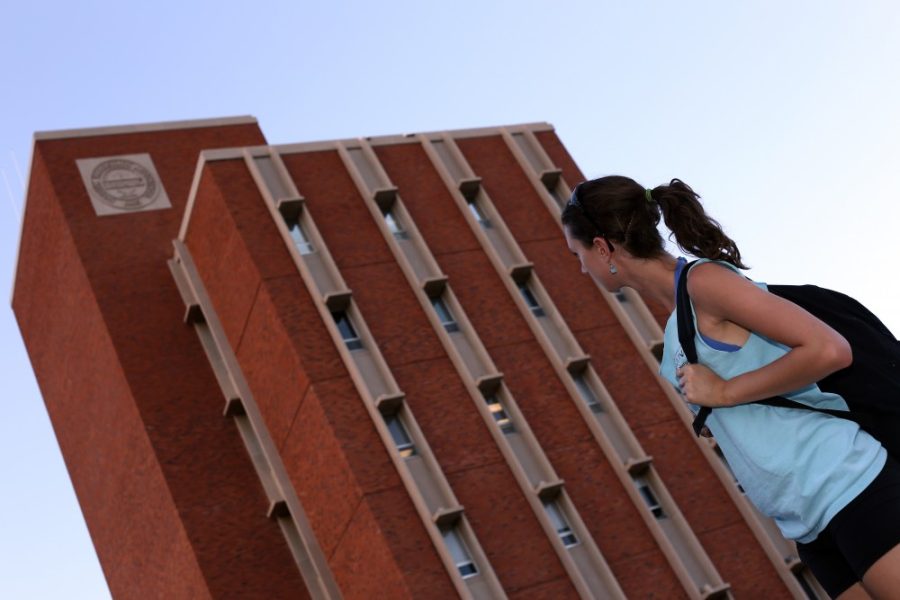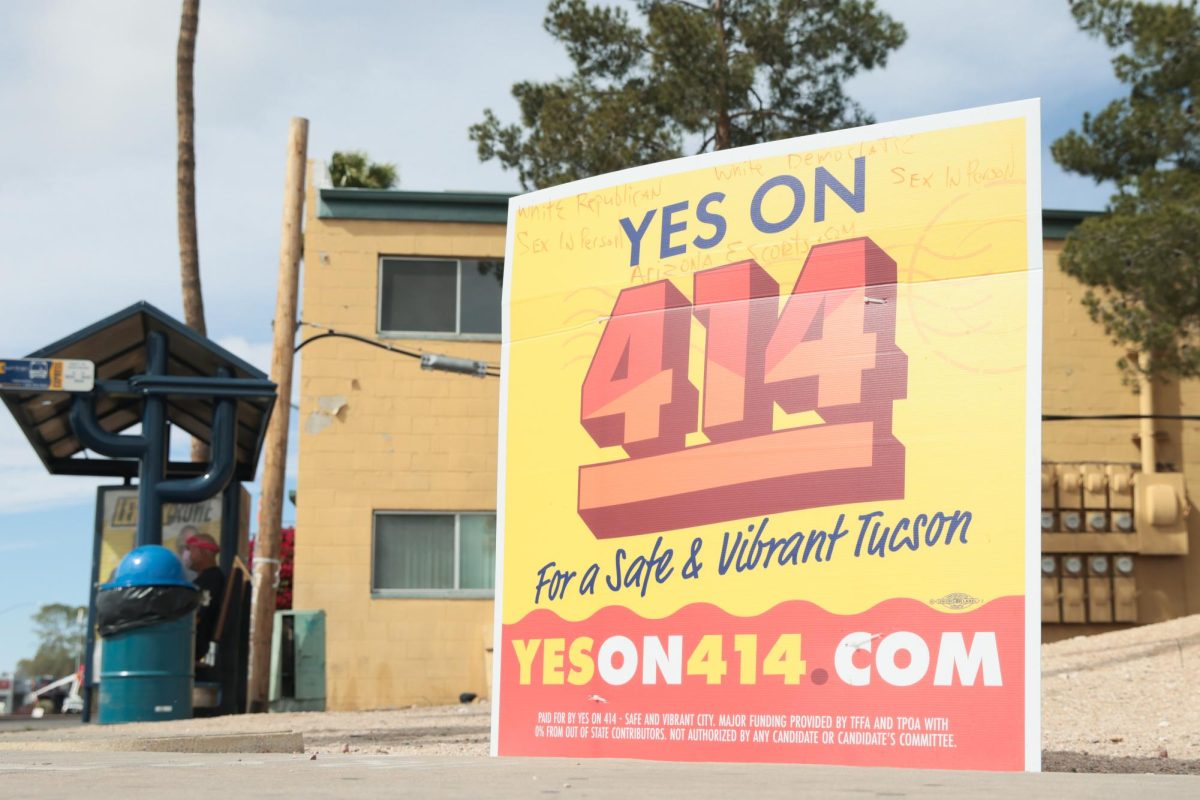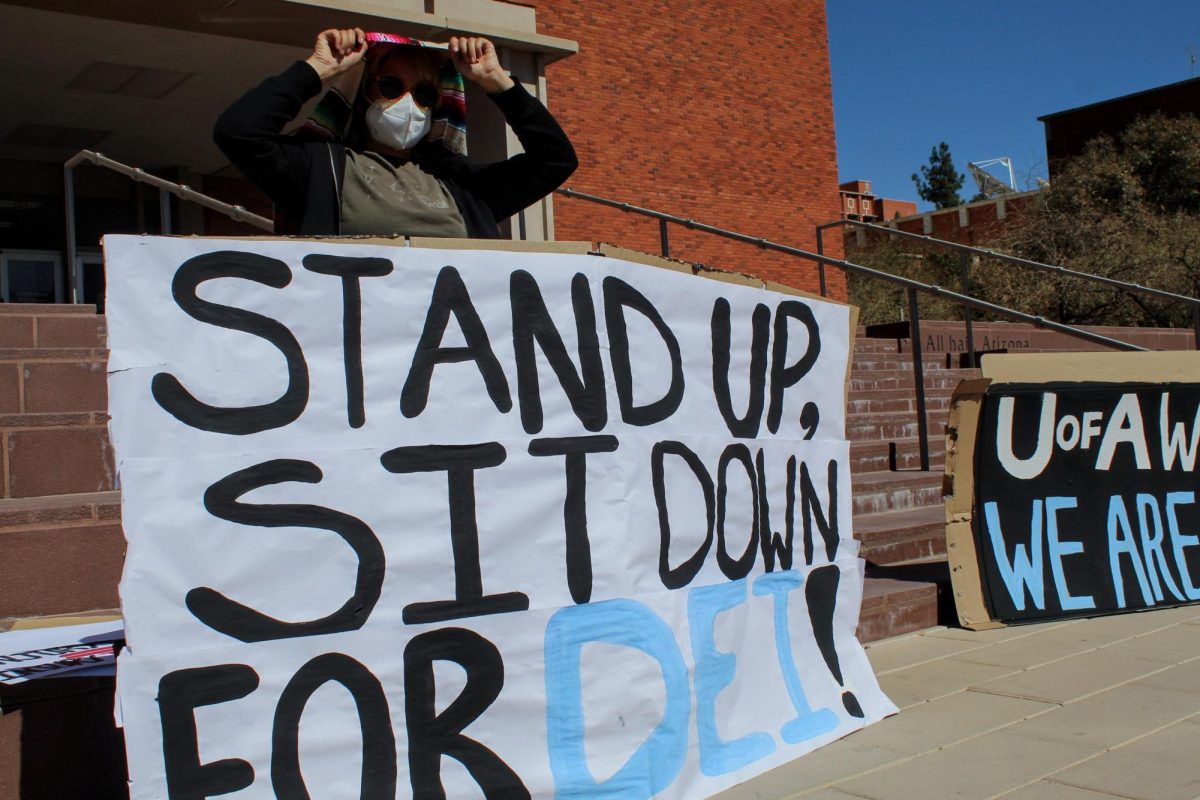Fewer UA students are seeking funding for college this year despite Congress’ decision for student loan rates to remain low until next year, when rates will be based on the rate that the Department of the Treasury borrows at.
The year-to-date total of students at the UA receiving that type of funding, as of Aug. 24, is down by more than 1,100 recipients, or $11.45 million less than last year, according to a report provided by Elizabeth Acree, UA registrar and interim director of the Office of Scholarships and Financial Aid.
The average debt of a UA student is below the national average, according to Rebekah Salcedo, senior associate director of the financial aid office. Undergraduate students average more than $22,000 of debt and graduate students leave with an average of more than $47,000 of debt.
“[The average debt students have leaving college] influenced my decision on where I would get [aid] from,” said Phillip Noel, a physics freshman. “I wouldn’t be able to afford school without it.”
More than 56 percent of undergraduate students and 59 percent of graduate students leave the Arizona university system with debt.
The current interest rate for unsubsidized student loans, 3.9 percent, took effect retroactively, replacing the default rate, 6.8 percent, which was in place for part of July. The 3.9 percent rate will remain in place for the 2013-2014 academic year.
After 2014, the rate will be based on the financial market and be capped at 8.25 percent for undergraduate students, 9.5 percent for graduate students and 10.5 percent for PLUS loans.
“One piece of this that kept legislators for quite some time over the summer was whether or not there would be a cap,” Acree said. “Some people preferred that protection be in there.”
Putting a cap on interest rates would limit the amount of debt that thousands of students have when they leave the UA, according to Acree. At the UA, 34,179 students were offered some type of financial aid, grant or scholarship during the 2012 fiscal year, totaling more than $583 million.
In recent years, Congress enacted lower emergency rates due to a poor economy and lack of funding.
“Because the economy was doing so poorly, students were needing to be in school,” Acree said. “Tuition was rising because states were cutting back on funding.”
To replace that reduced rate next year, Congress put a plan in place that adds 0.93 percent for subsidized Stafford loans, 2.93 percent for unsubsidized Stafford loans and 3.93 percent for unsubsidized PLUS loans to the 10-year Treasury Note interest rate. The average interest rate for the 10-year note was 2.78 percent as of Aug. 30, according to the Department of the Treasury website.
“The way they’re doing it now is basically recalculating the formula instead of having Congress debate every year about what they think the rate should be,” said Rebekah Salcedo, senior associate director of the financial aid office. “Right now, it’s good for students — really, really good for students — because the Treasury bill is so low.”
-Follow Josh Nothnagle @josh_is_on









